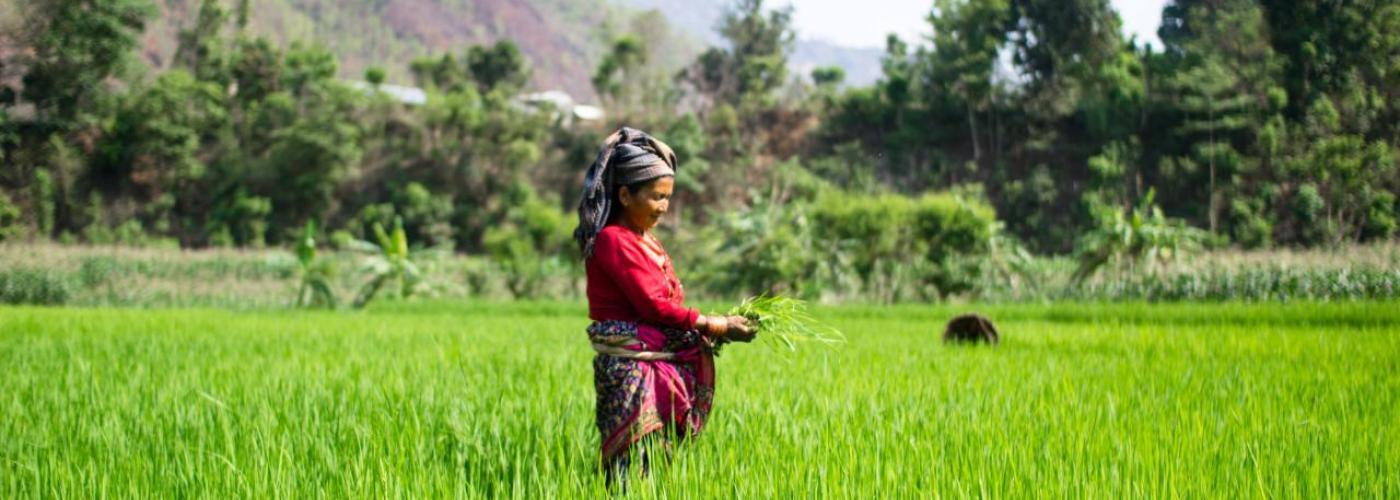How Agricultural Index Insurance Works for Sustainable Development and Resilience
Image

Agricultural index insurance has shown significant promise as a development tool to promote resilience and to accelerate the end of the need for aid. However, effectively implementing agricultural index insurance in developing economies around the world has been a challenge. Markets have struggled with expensive but poor-quality contracts and low levels of adoption by farmers. There are also no existing regulations for index insurance quality.
The MRR Innovation Lab’s Index Insurance Innovation Initiative (I4) is at the leading edge of research to improve agricultural index insurance contracts and interventions worldwide. This post is part of a five-part series (see links below) in partnership with Marketlinks that provides an introduction to agricultural index insurance, including its promise and pitfalls, recent innovations, and its place in broader efforts toward economic development and resilience.
While there are other features of conventional insurance that also chip away at its market sustainability when targeted to small-scale farmers, one of the biggest challenges is the high cost of verifying losses. When all the farmers in an area only insure a few hectares at most for premiums that might equal about US $15, the cost of verifying losses individually can quickly outrun all premiums collected even before a company pays out a claim.
Agricultural index insurance takes an indirect route to matching up payouts to losses. This indirect approach is mainly what separates index insurance from conventional insurance. Rather than sending someone out to verify each individual loss, an insurance company can build a contract that triggers payments when its “index” of measures predict a farmer or pastoralist has a loss.
How is this possible? It’s possible because two or more sets of data have a clear and predictable relationship. Rain and maize yields have a direct relationship. Vegetation growth and livestock mortality also have a direct relationship. An area’s total cotton production divided by every farm gives an estimate of how much each farm produced — another direct relationship.
How Agricultural Index Insurance Works
Since the earliest proposal for an area-yield index insurance in India by economist J.S. Chakravarti in 1915, economists have used these relationships between historical yields and a related index of measurements to predict losses for individual farmers.
The most common types of indices are average area yields, vegetation growth (NDVI), and rainfall (more on each of these later in this series). Each of these indices can statistically predict an individual farmer’s crop or livestock losses with varying accuracy and at different costs, though these predictions might not be true for every farmer.
This highlights one drawback to index insurance, which is “basis risk,” meaning the difference between an index’s estimate of an individual farmer’s loss and a farmer’s actual loss. With index insurance there is always the chance that an individual farmer who experiences a loss will not receive an insurance payout. There is also always the chance that a farmer who had a year without any losses will receive a payout. In either case, an index insurance contract has failed.
In a way, basis risk is a tradeoff for avoiding the need to verify individual losses. Index insurance will always carry basis risk, since an index of average conditions in an area will not necessarily capture conditions on each individual plot. One challenge for researchers moving forward is to develop more accurate indices that do a better job of predicting individual losses at lower costs and building better contracts that include failsafes so farmers who receive no payout are still protected.
The next post in this series digs into exactly how agricultural index insurance promotes economic development. It will include impact evaluations from I4 researchers and others that show both the promise and the missed opportunities of this innovative financial tool.
The Feed the Future Innovation Lab for Markets, Risk & Resilience at UC Davis generates and transfers knowledge and innovations that promote resilience and empower rural families, communities and markets to share in inclusive agricultural growth.


